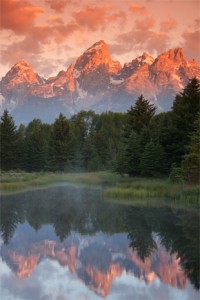
Lighting is everything. Learn to see light and position yourself to capture natural light in its most flattering state.
What do I mean by this? Most people stand with the natural light behind them so that they are photographing into a scene flooded with light. This light is great for a fast expose, but tends to “flatten” a scene because everything has the same intensity and lighting. If you positioned yourself so that you are shooting into the natural light you create a very dramatic “back-lighting” which has much more shape and form.
Try to set up the composition in your view finder so that lighted areas over lap shadowed areas. This will create a wonderful sense of depth in your photo. Overlapping will also create strong contrast in the composition and tends to help the sense of form in your picture. Taking the same shot with different exposure settings will also drastically change the quality of light in your photo. It is a good practice to take several different shots with under exposed and over exposed settings to make sure you will return to the studio with at least one shot perfectly exposed.
Look for things that can add character or drama to your photo. Directional lines help create a sense of movement in your photo. Position yourself to take pictures with strong visual lines that travel through your picture. This means that the line should enter from one side of your picture and leave the photo on one of the three other sides of the photo. Diagonal lines are the most productive for drawing the viewer into your picture and creating depth. Lines can also be made by changes in light (light to shadow), the edge of two objects meeting, tonal changes and warm to cool changes.